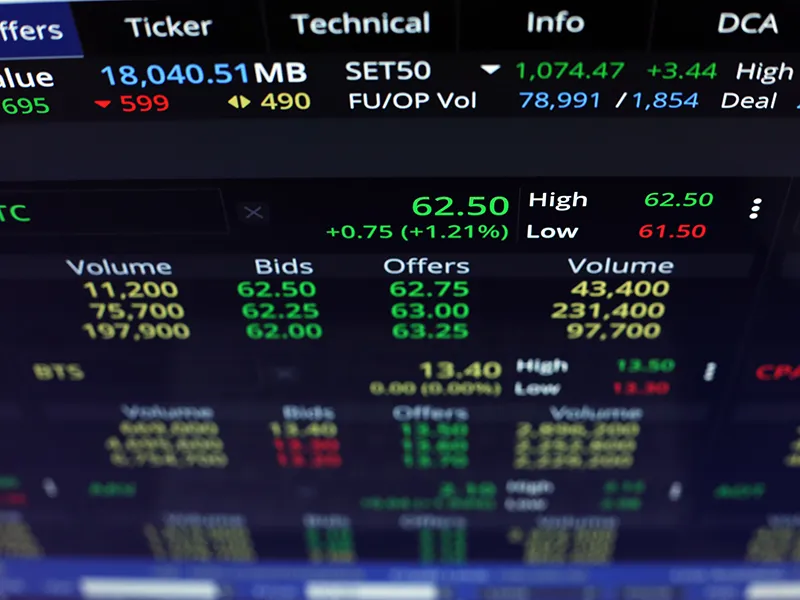
The Indian rupee is continuing its downward plunge as it touched a lifetime low of 79.96 against the US dollar recently. Since the start of the new year, it has fallen about 7%. Many currency experts expect the INR to fall further, despite the RBI starting to actively stabilise the currency.
While net exporters are starting to make gains since they will now earn more rupees against dollars, it’s the net importers who are adversely impacted as they need to pay more for buying dollars to make their imports.
Here’s a look at the various sectors that will face the heat due to the falling Rupee and industries that will benefit from rupee depreciation.
What is currency depreciation?
To begin, let us first understand the meaning of currency depreciation.
Currency depreciation means that a currency (in our case, the Indian Rupee) is losing its value against foreign currencies like the US Dollar. Just like a product, a currency also has demand and supply movements that determine its value.
The INR is benchmarked against one of the most traded currencies in the world, the US Dollar.
So, if we say that the rupee has depreciated from 77 to 79, it means that if we earlier paid Rs. 77 to buy something worth 1 USD, the same product/service will now require us to pay Rs. 79. This applies to what we import. When it comes to exports, it means we earn Rs. 79 instead of Rs. 77 for selling a product worth 1 USD.
Some of the top reasons behind rupee depreciation are:
- General dollar strength due to higher global demand
- Higher crude oil prices cause higher import bills. This puts pressure on the country’s forex reserves
- Higher outflow of foreign investments due to global uncertainties triggered by issues like the Russia-Ukraine war and rising global inflation.
Did you know
Foreign portfolio investors have withdrawn close to Rs. 2.2 lakh crores from India in the first half of 2022. However, the outflow has considerably slowed down in July’22, giving rise to expectations that the economic scenario will be stabilised and the rupee depreciation may be controlled.
Which sectors benefit from rupee depreciation
When the rupee depreciates, the general notion is that there will be a negative impact on the economy. However, there are a few sectors that benefit from a falling rupee. Such sectors earn most of their revenues in dollars and every dollar earned will now fetch them more rupees.
Here’s a look:
- IT sector
The Indian IT sector generates most of its revenues from exports. As the rupee value depreciates, international clients of Indian IT comes can avail their services for less price. Thus, domestic IT companies can aim for more revenue through higher sales from global clients.
Additionally, since the last decade and further triggered by the Covid-19 pandemic, India has seen an influx of overseas businesses being offshored to the country due to cost benefits. With a declining rupee, the revenues of such companies can improve further.
- The real estate sector
NRIs and foreign investors looking to invest in India’s real estate sector can also benefit from rupee depreciation since they now have to pay less to acquire a property. Due to lower costs, there will be more buyers for premium and luxury real estate. This provides a significant boost to the sector.
- Metal businesses
India ranks high in the world’s crude steel production. Since the domestic steel industry is mostly export-focused, rupee depreciation boosts the revenues of these businesses and triggers growth in this sector. This can be seen in the stock performance of companies like TATA Steel, NALCO, and JSW steel which have zoomed up since April 2022.
Other than these, the pharma and textile sectors will also gain from the falling rupee. As per estimates, the pharma industry may easily be able to add 0.1-0.15% to their EBITDA margins this year. Similarly, the garment industry may be able to add 1% to their profit margins with every 0.25-0.5% fall in Rupee.
Which sectors are hurt by rupee depreciation?
Some of the sectors that are already starting to feel the pinch of the falling rupee are:
- Import-dependent sectors
Sectors that are heavily dependent on imported raw materials, such as the chemical and automobile industries will now have to pay more for the imports as the rupee is declining. Since the rising cost of production is passed on to consumers, there is a decline in product demands and a resultant drop in profit levels of these businesses.
- Franchise businesses
Franchise owners like Jubilant FoodWorks Ltd and Page Industries who own franchises of international companies will now have to pay more in royalties since these are paid in US dollars. This is because a decline in rupee value will mean they have to pay more rupees per dollar.
Other than these sectors, FMCG and airline companies that import raw materials like oil and gas will also suffer from rupee depreciation. The negative effect is already visible in stock performances of companies like Adani Wilmar, Reliance, Indigo, etc.
Similarly, the cement industry is likely to be hit by rising costs as the rupee falls. This is because of higher energy and logistics costs. Telecom businesses may also see rising capital expenditures due to the falling rupee.
How does a weakening rupee affect the economy?
The Indian economy is heavily dependent on imports, including crude oil, metals, electronic components, etc. For instance, India imports more than 80% of its crude oil needs!
For importing goods and services, the country has to make payments in US dollars. With a weak rupee, India will now have to pay more for the same amount of imports. Thus, the raw material and production costs of companies are rising and are being passed on to the consumers, which in turn, is leading to further inflation.
Conclusion
The Indian government and RBI have been indicating that the Rupee fall is not a major blow to the country’s economy since the fall is largely driven by the rising demand for the Dollar. Therefore, although the Indian businesses may be temporarily hit from a cost perspective, the economy, in general, is not significantly impacted.
FAQs
Since inflation results in a reduced buying power of a currency, it tends to devalue the currency. Thus, countries going through high inflation periods generally see their currencies weaken as compared to other currencies.
The current rise in the demand for US Dollar is mainly attributed to higher demand for bonds and fixed securities such as the US treasury bonds as investors are moving away from riskier investments due to global market volatility.
Stock market investors must keep a close watch on rupee value movements while investing in certain sectors as depreciation in the currency may benefit certain sectors whereas it can hit the cash flows of other sectors.
The RBI has started working on easing regulations around capital accounts and forex flows to attract more foreign investments. With higher foreign inflows, the demand for Rupee will rise and this can prevent the currency from falling further.


























